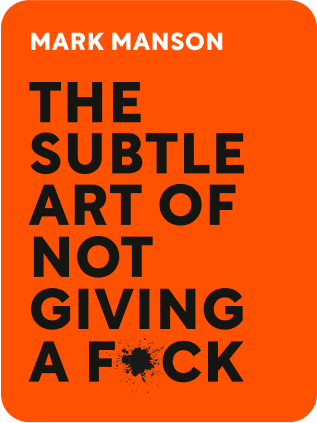

This article is an excerpt from the Shortform book guide to "The Subtle Art of Not Giving a F*ck" by Mark Manson. Shortform has the world's best summaries and analyses of books you should be reading.
Like this article? Sign up for a free trial here .
How is self-awareness like an onion? Why is it important to peel back the layers and examine yourself?
In The Subtle Art of Not Giving a F*ck, author Mark Manson compares self-awareness to an onion because each layer needs to be peeled back and examined before you truly know yourself. He explains what is under each of the three layers.
Keep reading to learn why self-awareness is like an onion.
Self-Awareness Is Like an Onion
Self-awareness helps you understand what values are driving you to feel and act in certain ways, so you can choose better values.
Self-awareness is like an onion, it has multiple layers. To uncover your deepest motives, you need to peel back the layers and examine each one by questioning yourself.
Peeling Back the Onion
- Layer one: Identify your emotions. When something is bothering you, identify what you are feeling — for instance, this makes me feel sad.
- Identifying your feelings can be difficult because we’re unaccustomed to it, and it takes practice. Many people were taught they should repress emotions, or that certain emotions were inappropriate. So they have emotional blind spots, and have to learn to identify and express the forbidden emotions constructively.
- Layer two: Determine why you feel certain emotions. Ask yourself why you feel the way you do. Once you understand the cause, you can change.
- It often requires the help of a therapist to understand why you feel certain emotions. It’s difficult because the reasons often involve your definitions of success and failure. For instance, the reason you feel angry in a certain situation could be that you feel you’ve failed at something.
- It can help to keep asking yourself “why” multiple times until you can’t answer it anymore.
- Layer three: Identify the personal values underlying your emotions. How do I define success and failure; what yardstick am I measuring myself against?
- Our values are the basis for what we do. The kinds of problems we have are a result of our values, and affect how happy and satisfied we are.
- Since our emotions and thoughts are based on our values, a nonconstructive value can throw them off balance.
- Most people have trouble answering “why” questions about their values. For instance, if they ask themselves why they feel lonely, the answer may be to blame someone else for how they feel. But without closer self-examination, they won’t identify the true reasons for their feelings, and can’t address them.
To understand our feelings and values we need to ask ourselves questions that can make us uncomfortable. For instance:
- Think of something that bothers you.
- Ask yourself why it bothers you. (Often when something bothers us, it’s because we perceive we’ve failed in some way.)
- Considering the perceived failure, ask yourself why it seems you have failed (why you believe this).
- Ask whether there’s another way you could look at the situation. What if it’s not a failure?
Problems are inevitable but we determine what they mean based on the values and standards we use to interpret them. The values and standards we apply are more important than the actual truth of the situation.
Working Through an Example
Here’s a more specific example from the author of The Subtle Art of Not Giving a F*ck. Mark Manson wanted to have a close relationship with his brother, and he believed an essential part of that was for them to be responsive to each others’ emails and text messages. But his brother didn’t respond consistently to his messages, which upset him.
As he questioned himself, each Q&A brought him closer to the values and standards underlying his feelings:
- My brother doesn’t answer my messages.
- Why?
- He doesn’t care about me.
- Why do you believe that?
- If he cared about having a relationship, he’d answer them.
- Why does this feel like a failure?
- Because brothers should have a close relationship.
- Why should they?
- Families are supposed to be close.
- Why do you believe that?
- Your family should take priority.
- Why do you believe that?
- It’s normal for families to be close, and I lack that.
- Are you sure about that?
- Yes, because he doesn’t answer my text messages.
- Is text message response the best way to tell whether a family is close?
- …maybe not.
Manson’s problem was using his brother’s email responses a measurement of their relationship, which was a warped yardstick and was outside of his control. He could have defined and measured closeness a different way, such as trusting each other or being able to rely on each other when in trouble.
After working through his emotions and values, he became aware of why he felt so much pain, and found that it was unjustified.

———End of Preview———
Like what you just read? Read the rest of the world's best book summary and analysis of Mark Manson's "The Subtle Art of Not Giving a F*ck" at Shortform .
Here's what you'll find in our full The Subtle Art of Not Giving a F*ck summary :
- How to clarify what's important to you (and not just what you think should be important)
- Why it's okay for things to not always go well in life
- Why you need to care about fewer things






